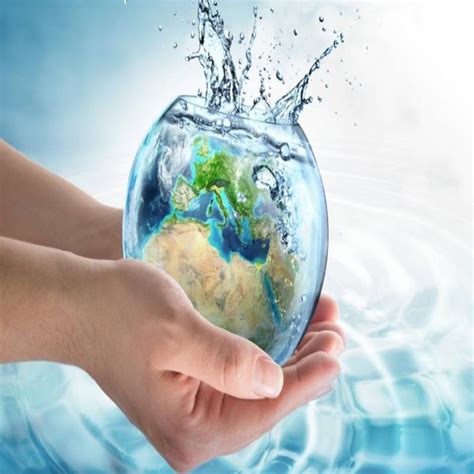In today’s fast-paced world, protecting the environment has become more crucial than ever. Conservation isn’t something to think about just once in a while—it’s a round-the-clock responsibility. From reducing waste to supporting sustainable practices, everyone can contribute to safeguarding our planet. By adopting simple yet impactful habits like reducing, reusing, and recycling, conserving water, improving energy efficiency, and choosing eco-friendly transportation options, we can all make a difference. Moreover, supporting eco-conscious companies and products can further promote sustainable living. This guide offers essential conservation tips that you can easily incorporate into your daily routine, helping to protect the environment and ensuring a healthier planet for future generations.
xotools.xyz invites you to delve into this topic thoroughly.
1. Reduce, Reuse, Recycle:
One of the most effective ways to contribute to conservation efforts is by adopting the “Reduce, Reuse, Recycle” approach. By minimizing waste and making more conscious decisions about what we consume, we can significantly lessen our environmental impact. Reducing waste starts with mindful consumption—buying only what we need, avoiding single-use items, and choosing products with minimal packaging. This not only decreases waste but also reduces the demand for resource-intensive manufacturing processes.
Reusing items extends their lifespan and keeps them out of landfills. Whether it’s repurposing containers, donating clothes, or upcycling furniture, there are countless ways to give products a second life. This helps conserve raw materials and reduces the energy required to produce new goods.
Recycling plays a vital role in reducing the need for new materials and lowering greenhouse gas emissions. By properly sorting recyclables such as paper, glass, metal, and certain plastics, we can ensure these materials are processed and reused efficiently. Many communities provide clear guidelines on recycling, making it easier for individuals to participate.
Incorporating these practices into everyday life is a simple yet powerful way to conserve resources. With small adjustments in our habits, we can collectively make a significant difference in protecting the environment and promoting a sustainable future.

2. Conserve Water:
Water is one of our most precious resources, and conserving it is essential to ensuring a sustainable future. Simple daily actions can help reduce water waste and protect this vital resource. Start by being mindful of your water usage at home. Fixing leaky faucets, taking shorter showers, and turning off the tap while brushing your teeth are easy ways to reduce water consumption. Installing water-efficient fixtures, such as low-flow showerheads and toilets, can significantly cut down on household water use without sacrificing comfort.
Outdoors, you can conserve water by using efficient irrigation systems or by watering plants during the early morning or late evening to reduce evaporation. Opting for drought-resistant plants in landscaping can also minimize the need for frequent watering. In addition, collecting rainwater for use in gardens or other non-potable purposes is an excellent way to repurpose natural resources.
Beyond personal use, supporting policies and initiatives aimed at conserving water in agriculture, industry, and urban planning can have a large-scale impact. As water scarcity becomes a growing concern worldwide, every effort to reduce unnecessary consumption counts. By making small changes in our daily routines and advocating for larger systemic changes, we can play a crucial role in preserving the planet’s water supply for future generations.

3. Energy Efficiency:
Improving energy efficiency is a key step toward reducing our environmental footprint. Simple actions like switching to energy-efficient light bulbs, such as LEDs, and turning off lights and electronics when not in use can significantly cut down on energy consumption. Unplugging devices when they’re fully charged or not in use helps prevent “phantom” energy waste.
Another important aspect is using energy-efficient appliances, which consume less power while still providing the same functionality. Many modern appliances come with energy ratings that can guide eco-friendly purchases.
Insulating homes properly and using smart thermostats also plays a role in conserving energy. These measures help maintain comfortable indoor temperatures without over-reliance on heating and cooling systems, further reducing energy use.
By embracing energy-efficient practices in our homes and workplaces, we not only save on utility bills but also contribute to a cleaner environment by reducing greenhouse gas emissions.

4. Sustainable Transportation:
Transportation is one of the largest contributors to greenhouse gas emissions, making it crucial to adopt more sustainable methods of getting around. Reducing the reliance on single-occupancy vehicles is a simple yet effective way to lower your carbon footprint. Walking or biking for short trips not only reduces emissions but also promotes physical health. For longer distances, public transportation, carpooling, or ridesharing are excellent alternatives to driving alone.
For those who rely on personal vehicles, switching to electric or hybrid cars can make a significant environmental impact. These vehicles produce fewer emissions compared to traditional gasoline-powered cars, and with advances in charging infrastructure, they’re becoming more accessible and convenient. Regular maintenance of your car, such as ensuring proper tire inflation and performing tune-ups, can also improve fuel efficiency and reduce emissions.
In addition, embracing remote work or telecommuting when possible cuts down on the need for daily commuting, thus further reducing transportation-related energy use.
Choosing sustainable transportation options is a powerful way to contribute to conservation efforts. Whether by opting for greener modes of transport or reducing unnecessary travel, everyone can play a part in making the transportation sector more eco-friendly. These changes, while seemingly small, collectively help combat climate change and protect the environment for future generations.
5. Support Eco-Friendly Products and Companies:
Supporting eco-friendly products and companies is a significant way to promote sustainability and conservation. By choosing products made from recycled or sustainable materials, consumers can help reduce the demand for resource-intensive manufacturing processes. Opt for items with minimal packaging, or packaging that can be reused or recycled, to cut down on waste.
Eco-conscious companies often prioritize environmentally friendly practices, such as reducing carbon emissions, using renewable energy sources, or maintaining ethical supply chains. Researching and supporting these companies helps drive demand for more sustainable business models. Look for certifications like Fair Trade, USDA Organic, or B Corp to identify brands that prioritize sustainability.
Additionally, shifting towards reusable products like water bottles, bags, and containers reduces the need for single-use plastics, which often end up in landfills or oceans.
Every purchase is a vote for the kind of world we want to live in. By supporting companies that are committed to sustainability and offering eco-friendly products, we can help drive positive change in the marketplace and encourage more businesses to adopt environmentally responsible practices.
Adopting conservation practices in our daily lives is essential for protecting the environment. By reducing waste, conserving water, improving energy efficiency, choosing sustainable transportation, and supporting eco-friendly products, we can each make a meaningful impact. Every small action contributes to a larger effort to ensure a healthier planet for future generations. Embracing these practices not only benefits the environment but also fosters a sustainable and responsible way of living.
xotools.xyz









